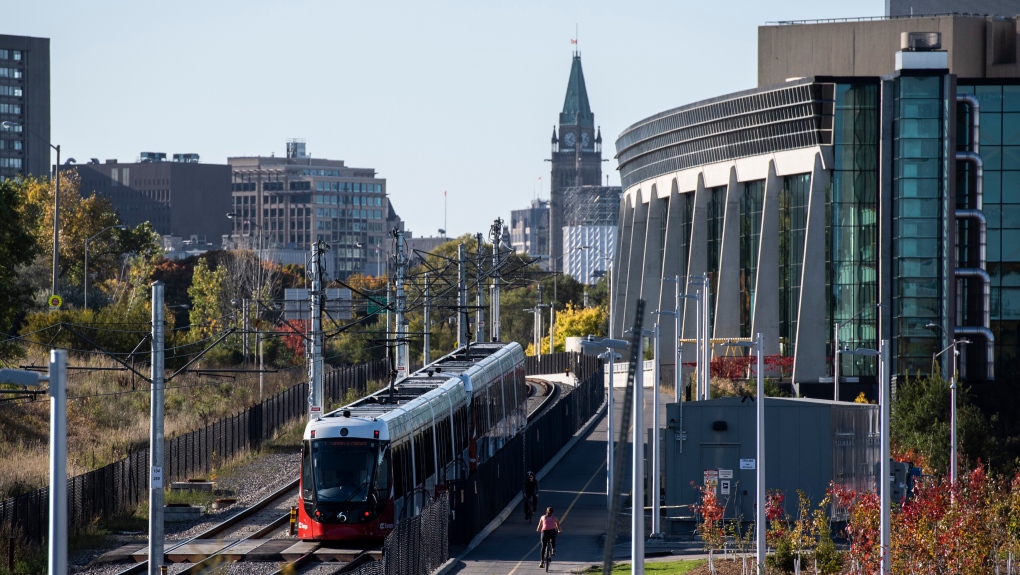


OTTAWA –
Auditor general Karen Hogan says the government’s $4.6-billion program to bolster transportation infrastructure across the country suffers from poor results tracking, but the fund is well-crafted overall.
In a report on Tuesday, Hogan said the Transport Department took an evidence-based approach to pinpoint supply-chain bottlenecks and call for proposals under the National Trade Corridors Fund.
For example, backed-up terminals and overloaded warehouses during the past few years led officials to solicit submissions for port upgrades and expansions.
However, half of the 181 funded projects failed to include a fleshed-out strategy to assess results, leaving their impact unclear, according to the report. A handful had no strategy.
“The department did not effectively monitor and report on results,” the report stated.
Transport Canada needs sturdier monitoring and reporting systems, especially given how long infrastructure programs can take to produce results, Hogan wrote.
“This time factor makes it all the more important to have a robust system to track performance so that Transport Canada can show the extent to which the fund has contributed to improving the fluidity of Canada’s transportation infrastructure,” she said in a release.
The dearth of tracking also produced radio silence on how the program might back sustainable development goals from the United Nations, Hogan added.
The government launched the National Trade Corridors Fund in 2017 in an effort to strengthen Canada’s network of roads, rails, airports and seaports by 2028. The projects by municipal and provincial governments as well as private companies range from routine street upgrades to multibillion-dollar port terminals.
Industry has welcomed the money, but says the program falls far short of the funding tsunami unleashed in the United States as well as the kind of comprehensive strategy needed to address long-standing problems.
Since 2021, the Biden administration’s US$1.2-trillion infrastructure bill has funded some 40,000 projects aimed at rebuilding the U.S. transportation network.
“There is no commensurate kind of funding happening, particularly for marine infrastructure, on our side,” said Jason Card, a spokesman for the Chamber of Marine Commerce.
“The dire consequence of that is we’ll be falling behind in our carbon reduction goals, our supply-chain strength and our economic development goals, potentially. This stuff has a knock-on effect if you get three or four or five years where ports are doing extraordinary things down south of the border and we’re not keeping up.”
Trade groups and analysts have also called for a more cohesive approach to the overall flow of goods into and out of the country.
The government launched a national infrastructure assessment in 2021, but has yet to follow up on recommendations — establishing an independent commission on major infrastructure opportunities, for example — more than two and a half years later.
The United States, European Union, Australia and Switzerland have overarching transport infrastructure strategies, the European Court of Auditors found in 2021. Canada does not.
The auditor general highlighted other defects in the National Trade Corridors Fund.
The Transport Department weighed project proposals using a merit-based approach, “but could not demonstrate on what basis it prioritized some meritorious projects over others,” the report found. Documents that laid out the benefit of various projects recommended by civil servants were “insufficient” to support their ultimate ranking, it said.
Nonetheless, the auditor general’s office found no instance of funds handed over to ineligible recipients.
“In terms of the program, it’s working well,” Transport Minister Pablo Rodriguez told reporters. “We have to do a little bit better in terms of reporting.”
The government also established an office to develop a national supply-chain strategy in December, he noted.
As of Dec. 31, Transport Canada had approved $3.8 billion to fund 181 transportation projects under the now seven-year-old trade corridor program, with about 20 per cent of that money spent so far.
This report by The Canadian Press was first published March 19, 2024.